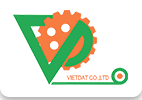Streamline Your Preventative Maintenance
Main content
No factory can streamline the operation of its packaging machinery and maximize its efficiency without the need for preventive maintenance and planned machine maintenance. Of course, you must develop an optimal plan to make the most of the factory workflow.
Temporarily stopping the plant's packaging machinery and maintaining its machinery can be very costly, whether it has been planned for two years or due to an emergency. However, studies have demonstrated that short-term costs are more offset by improved plant efficiency and operations, including lower energy use and fewer unexpected mechanical problems. more pronounced.
Active, regularly scheduled work is an essential component to keep efficient production and packaging equipment and extend their useful life. These large-scale maintenance jobs can have a big impact on your plant, but it's important to create a plan that fits your operational needs.
In this article, we outline how to incorporate preventive maintenance into planned shutdowns and how to design a plan that maximizes your efficiency.
Protection against common risks when preventive maintenance of packaging machinery
Preventive maintenance is all about proactively identifying potential problems before they become a disaster. It's the same way you take care of your car - changing oil regularly, turning tires, air filters and replacing fan belts. These are all forms of preventive maintenance. Checking and regularly changing key parts helps you prevent expensive repairs in the future. It also promotes the perfect operation of your machines for many years to come.
In production, maintenance prevention protects against:
· Sudden downtime
· Deadline or commitment to the customer
· Product is damaged
· Hazard and workplace injury
These risks can affect your relationship with your customers, retailers or personnel, resulting in cancellation of contracts or a decrease in your profits. If any of these risks become a reality, your unplanned maintenance could lead to greater investment costs, additional costs for inadequate parts and machines that are not serviced. export.
Of course, you don't want to disturb customers by performing preventive maintenance when they need the product on a tight schedule. The best time to perform maintenance is during the planned plant downtime, usually in the summer when most customers and staff travel. It also allows your plant to rest during the hottest times of the year.
Stages of maintenance shutdown
Once planned, maintenance and turnaround teams typically spend one to two weeks testing, testing and repairing equipment. They work around the clock to minimize downtime and short-term financial losses. But even before the actual shutdown and maintenance work, the shutdown involves several planning stages.
Range
Your initial plan, scope and organization of maintenance work are the strategic foundation for your entire machine maintenance project. During this period, it is important to review the research of preventive maintenance projects carried out earlier to find out how other factories improve overall equipment efficiency and reduce costs. Typically, senior management determines the scope of the project and key performance indicators (KPIs) will be used to measure performance. They then handed over the plan to the plant's shutdown management team.
Preparation
With existing high-level plans, then you have to develop some additional plans and make sure that each plan fits into the overall scope of your maintenance project. Including:
. Environmental planning, health and safety
· Logistics planning
· Storage protection and finishing plan
· Quality assurance and quality control plan
Executive
With every detail in place, your shutdown management team will check your device, measure the range and schedule changes and budget then against the KPI that is set up in the scope phase. They will then take corrective action when necessary. After maintenance, the team will inspect all equipment, make any final repairs or cleanings to make sure the entire plant is ready to boot. When the project is near completion, they can also adjust your workforce schedule and needs according to your KPI.
Startup / Revenue
Before resuming normal operation, the operator and any third party contractor will join the preventive maintenance team to conduct a final inspection. Each stakeholder should use a checklist of your creations to ensure the proper functioning of all your machines. When the final inspection is completed, the maintenance team will analyze and / or remove the equipment used in the project and hand over the activities to your team. Your operating team can then start up your device and speed up normal operation.
Evaluate
Finally, conduct a post-shutdown meeting to review the process and evaluate the performance of each element you updated during the shutdown process. You will also audit your KPI to evaluate the overall success of the project. Prepare a final report that summarizes your successes and problems, detailing every phase of the project. This will help you improve your processes for future preventive maintenance ..









